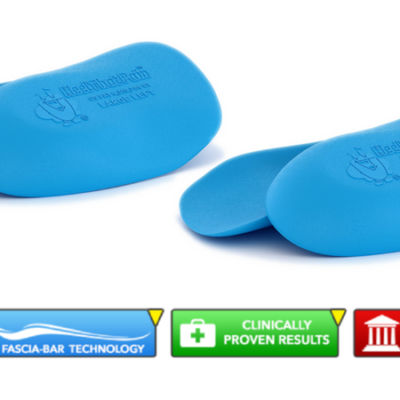Heel Pain & Football
While heel pain might not sound as dramatic as a torn ACL or a head injury, it’s one of the most common ways that football players get sidelined from the game they love.
Heel pain accounts for 5%-10% of all athletic injuries — or about a million cases of plantar fasciitis per year, just among football players.
Here’s what you need to know about how football can cause plantar fasciitis, warning signs you should watch out for, cautionary tales of notable football players who have been sidelined by heel pain, and most importantly how to treat this common condition!
How Does Football Cause Plantar Fasciitis?
Heel pain from plantar fasciitis (pronounced PLAN-tar fashee-EYE-tiss) develops when the long, flat ligament on the bottom of the foot (the plantar fascia) is overused or injured and begins to degenerate.
Sports like football are a common trigger for this degeneration. Long practice sessions and games combined with high impact, sudden movements like running and jumping takes a toll as the plantar fascia struggles to keep up and absorb the force of impact properly.
Over time, without proper rest and care, small tears may appear as the ligament becomes damaged and inflamed, resulting in worsening damage to the plantar fascia.
Warning Signs of Plantar Fasciitis
Plantar fasciitis usually develops gradually. At first, you might only notice heel pain once in a while, after a long week of practice, or a game that involved a lot of running. Because early heel pain from plantar fasciitis comes and goes, it can be all too easy to dismiss. However, this is one of the first indications that your plantar fascia ligament may be wearing down.
One of the major telltale warning signs of plantar fasciitis is heel pain that is most noticeable with the first steps after getting out of bed in the morning, or when taking the first steps after sitting for a long period of time. This happens when the deteriorating plantar fascia contracts and stiffens during periods of inactivity. The first few steps that stretch the injured fascia are especially painful.
The pain from plantar fasciitis may be dull, aching, or sharp. The heel pain can typically be reproduced by flexing the toes upwards (dorsiflexion) and tensing the fascia.
Risk Factors for Developing Plantar Fasciitis
In athletes, a number of factors are associated with the development of plantar fasciitis. Risk factors for athletes include:
- Injuries to the feet or legs that lead to biomechanical imbalances. Such injuries can lead to decreased flexibility in the foot and ankle, gait changes, and decreased muscle strength or muscle imbalance (e.g., muscles in one leg or foot are weaker than the other) that place extra strain on the plantar fascia.
- The repetitive nature of sports activities and improper training.
- Rapidly increasing the number of miles run.
- Running on steep hills.
- Wearing football cleats that are worn out.
- Wearing football shoes that do not have a cushioned sole or enough arch support.
- Abruptly changing the intensity or duration of the running routine.
Ignoring these warning signs and “playing through the pain” can have serious and sometimes long-term consequences like a tear in the plantar fascia, or a full rupture (check out the stories of famous football players below!). It’s important to take quick action if you notice these warning signs.
Treating Heel Pain from Football
In many cases, the inflamed plantar fascia ligament may be slow to heal, or get worse, because someone with plantar fasciitis does not completely stop the aggravating activity. That’s why the most important step toward feeling better and staying in the game is taking your heel pain seriously and following through with consistent treatment.
In more than 90 percent of cases, RICE treatment (rest, icing, compression, and elevation) combined with orthotic inserts that support and realign the arch, and stretches to strengthen the plantar fascia and surrounding muscles is enough to foster healing over several months. However, about 10 percent of plantar fasciitis cases do not respond to conservative treatment and may need medical intervention or even surgery.
Famous Football Players with Plantar Fasciitis
Peyton Manning is one of the most well-known football players to be sidelined by plantar fasciitis. In a game against the Kansas City Chiefs, Manning appeared to be in some pain while he played. Fans later learned that Manning had been battling plantar fasciitis for several weeks; then, during the game against the Chiefs, Manning partially tore injured the plantar fascia in his right foot — but continued to play. While he sought treatment after the game with icing and physical therapy, the partial tear was serious and Peyton continues to struggle with plantar pain.
Antonio Gates of the San Diego Chargers is another well-known football player to struggle with plantar fasciitis. Like Manning, Gates tried to “push through” playing with his plantar fasciitis, and ultimately ended up tearing his plantar fascia as well.
Whether you’re a world-famous athlete or play with a local pickup team, keeping your plantar fascia healthy and paying attention to the warning signs of plantar fasciitis will go a long way to making sure you don’t get sidelined by this painful condition.






